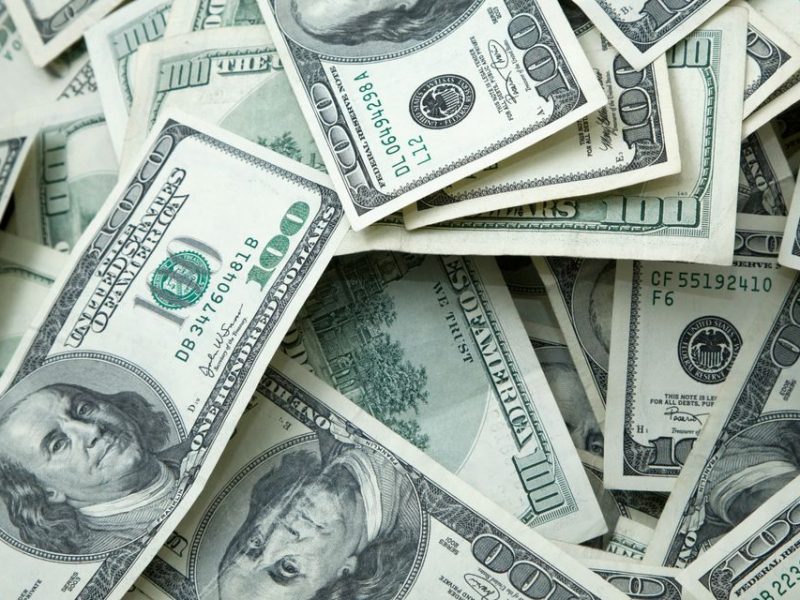All about the Significance of the Gold Standard System and Gold Reserve
Gold is not a commodity metal, it has played a vital role in human history, economy and culture of the long development process up to the present day. Before the emergence of the modern money system, gold served the role of money and the storage of wealth. Due to the rarity of gold, both in the West and in the East, people’s recognition and perspective of gold have made it frequently used items such as decorations, consumer jewelry goods as well as investment products.

In the modern financial markets, gold has become the most popular investment good. So what is its specific role and significance in the international market? This article will be of your assistance to all doubts about gold.
The Origin and Significance of the Gold Standard System
The gold standard is most simply understood as the value of the currency backed by gold, with gold reserves to determine the total amount of paper money that a country can issue, because the issued banknotes must have the equivalent value of gold as the value of the support. The exchange rate between national currencies is determined and calculated by the exchange value of the paper currency and gold.
The simple gold standard began with the issuance of gold coins in 1816 by the United Kingdom, which then exchanged bank notes issued by the banks with gold in 1823. That is to say, let the gold become the support behind these banknotes, making the banknotes into a kind of paper money accepted by everyone. However, with the development of the economy, the political and economic situation of countries around the world began to change. Though the developed countries held a lot of gold, it was still not enough to support all their currency, and the weak countries also lacked gold reserves to issue. When the First World War ended, all countries needed a lot of money and currency to rebuild their homes, in this case, the gold standard system basically collapsed. As the strongest executor of the gold standard system, Britain also had to abandon it in 1931.

The Role of Gold in Modern Financial Markets
After the end of World War II, when the world was in urgent need of a new economic regime, gold was once again promoted to a leading role in financial markets with its unique value but this time tied only to the dollar alone. At the Bretton Woods Conference in May 1944, the representatives of the 44 countries decided that the consideration equivalent for gold tied to the dollar would be $35 per ounce of gold, and the other countries determined their preferred exchange rate with the dollar.
By February 21, 1968, the United States canceled the requirement of 25% gold reserves when issuing banknotes, resulting in a great loss of the world’s confidence in the dollar. The gold standard became a thing of the past in 1971 when President Nixon announced the end of the dollar’s link to gold and let the dollar float freely. But it was also because of the demise of the gold standard that, starting in 1974, the United States allowed its citizens to deal in gold, and the commodity market in New York officially launched gold futures contracts in December 1974. Since then, gold began to be liberated from the gold standard system and became a popular investment tool in the financial markets, opening a new chapter in the investment market.
Gold Currency Role and Relationship with the U.S. Dollar
The price of gold, for instance, each gram is 57 dollars per gram, which is not only a commodity price but can be seen as a currency exchangeability relationship. The value of gold to the dollar is 1:57, so one unit (gram) of gold is worth 57 dollars. This exchange relationship is like the euro against the dollar exchange rate is 1:1.0531, or the exchange rate of the pound against the dollar is 1:1.2235 as well as other exchange prices in the foreign exchange market.

When the dollar exchange rate falls due to the impact of unfavorable news, the foreign exchange market’s confidence toward the dollar will fall at the same time, possibly causing 1 pound to rise from the original 1.2235 U.S. dollars to 1.5 U.S. dollars. When the dollar becomes weak, although the price of the pound itself does not change, more dollars still need to be used to exchange for the same amount of pounds. Similarly, if a gram of gold is worth 57 U.S. dollars, when the value of the dollar falls, the asking price of a gram of gold may rise to 60 U.S. dollars, and the price of gold will reflect the rise from 57 U.S. dollars to 60 U.S. dollars. Therefore, the strength of the dollar exchange rate in many cases has a direct impact on the fluctuation in the price of gold.
The Role of Gold in Foreign Exchange Reserves
Governments and central banks around the world hold foreign exchange reserves made up of different tendencies depending on fiscal and balance of payments conditions. But in addition to currencies, gold is one of the reserves or assets that are considered to be the most substantial. Among the world’s gold reserves, the U.S. government holds the highest amount of gold reserves at more than 8,133 metric tons.
Central Banks’ Attitude towards Gold Reserves
Since the financial crisis in 2008, many emerging countries, such as China, Russia and Mexico, have increased their gold reserves, and the gold investment market has taken the news of central bank purchases or sales as a factor in buying and selling gold.
In terms of the quantity of gold supply, the major European and American central banks have been playing the role of gold sellers since the end of the gold standard, with the US Treasury and the International Monetary Fund having sold gold back in the late 1970s. In recent years, the concept and projects that have attracted the most attention in the market include Gold+ which is adding a certain percentage of gold to an investment portfolio to strengthen the portfolio’s risk resistance and improve risk-adjusted returns, and whether China which has the highest amount of foreign exchange reserves in the world, will increase the amount of gold reserves.



